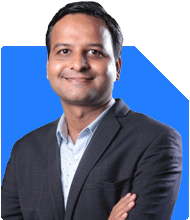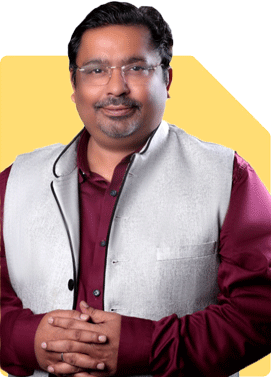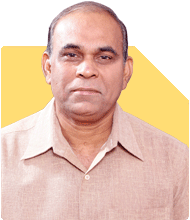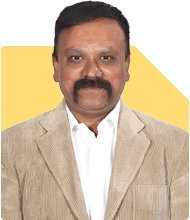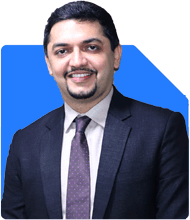Dear Dev ,
I am a retired person 62 yrs old . Recently I sold my equity portfolio , so I am having a spare corpus of about 60-70 lacs . I had kept this amount solely for equity/MF investments as I had also invested in FDs /Gold bonds separately .I want to invest it in an instrument which can give me less risk/good returns (above FDs & inflation beating ) , say about 9-10 % to the least in next 3 year & even better returns in the long run in my seventies /Eighties .
Please illuminate me on the following-
1. Is it desirable to put this entire amount in MFs or there should be some direct investment in equities also ?
2. If Yes , what should be the ideal mix of portfolio for me ?Should it have equity ( Large cap /Mutli cap) or Balance Hybrid funds will be more suitable from the risk angle as I am a retired person ? .Please suggest an ideal mix with category & names of fund with the amount to be invested .
3.If no , then please suggest alternatives .
Thanks & Regards
Apurv Chandra
Ans: You’ve wisely accumulated a significant corpus of Rs 60-70 lakhs. Now, you want to ensure this money continues to grow, provides inflation-beating returns, and does so with minimal risk. Your goal of achieving 9-10% returns in the short term, while aiming for better returns in the long term, is reasonable. As a retired person, maintaining a balance between growth and safety is crucial.
Let’s delve into your questions to help craft a suitable investment strategy.
Should You Invest Entirely in Mutual Funds?
Mutual funds offer diversification, professional management, and potential for good returns. Given your situation, investing the entire corpus in mutual funds could be a prudent move. However, balancing between equity and hybrid funds can help manage risks effectively.
1. Balancing Risk and Returns
Large-Cap Funds: These invest in well-established companies, offering stability with moderate growth. They are suitable for conservative investors seeking steady returns.
Multi-Cap Funds: These invest across companies of various sizes. They offer a mix of stability and growth potential, ideal for those with a balanced risk appetite.
Balanced or Hybrid Funds: These funds invest in a mix of equities and debt instruments. They offer a buffer against market volatility, making them suitable for retired investors like you.
Given your age and goals, a balanced approach with a mix of equity and hybrid funds seems appropriate. This can provide the growth you seek while managing risk.
Direct Equities vs. Mutual Funds
Investing directly in equities can offer higher returns, but it comes with higher risks. As a retired person, your focus should be on preserving capital while achieving reasonable growth.
1. Benefits of Mutual Funds Over Direct Equities
Professional Management: Mutual funds are managed by professionals who make informed decisions, reducing the risk of poor stock selection.
Diversification: Mutual funds spread investments across various sectors and companies, reducing the impact of any single stock's performance.
Convenience: Mutual funds require less time and expertise compared to managing a direct equity portfolio.
For someone in your position, relying on mutual funds instead of direct equities offers a safer, more convenient way to achieve your financial goals.
Ideal Portfolio Mix for You
Considering your objectives, here’s a suggested portfolio mix that balances risk and returns:
1. Large-Cap Funds (30-35% of Corpus)
Stability with Growth: Large-cap funds provide steady growth with relatively low risk. They invest in well-established companies that are less volatile.
Inflation-Beating Returns: These funds typically offer returns that outpace inflation, which is crucial for preserving your purchasing power.
Suggested Allocation: Invest Rs 18-24 lakhs in large-cap funds. This will form the stable core of your portfolio.
2. Multi-Cap or Flexi-Cap Funds (25-30% of Corpus)
Balanced Growth: Multi-cap funds offer a mix of large, mid, and small-cap stocks. They provide a balance between stability and higher growth potential.
Market Opportunities: These funds can adjust based on market conditions, allowing fund managers to capitalize on growth opportunities.
Suggested Allocation: Invest Rs 15-21 lakhs in multi-cap or flexi-cap funds. This provides a balanced approach to growth.
3. Balanced or Hybrid Funds (35-40% of Corpus)
Risk Mitigation: Balanced funds reduce risk by combining equity and debt investments. They provide a cushion during market downturns.
Steady Returns: These funds are designed to offer moderate returns with lower risk, ideal for retirees.
Suggested Allocation: Invest Rs 21-28 lakhs in balanced or hybrid funds. This ensures your portfolio has a solid defense against volatility.
Alternatives to Consider
If you prefer not to invest entirely in mutual funds, there are other options to explore. These alternatives can provide additional safety or income streams.
1. Debt Funds
Low Risk: Debt funds invest in fixed-income securities like bonds, offering lower risk compared to equities.
Moderate Returns: While returns are lower than equity funds, they still beat traditional FDs, making them a safer alternative.
Suggested Allocation: If you prefer less exposure to equities, consider allocating 20-30% of your corpus to debt funds. This would provide a stable, low-risk component to your portfolio.
2. Senior Citizen Savings Scheme (SCSS)
Safe and Secure: SCSS is a government-backed scheme offering regular income with safety of capital.
Attractive Interest Rates: The interest rates are higher than regular FDs, and they are also tax-efficient under Section 80C.
Suggested Allocation: If safety is your primary concern, you could allocate 10-20% of your corpus to SCSS. This will provide regular income and peace of mind.
Final Insights
Your investment strategy should reflect your risk tolerance, financial goals, and retirement needs. Given your situation, here’s a recap of the suggested approach:
Invest 30-35% in large-cap funds for stability and steady growth.
Allocate 25-30% to multi-cap or flexi-cap funds for balanced growth.
Place 35-40% in balanced or hybrid funds to manage risk and ensure moderate returns.
Consider debt funds and SCSS as safer alternatives if you prefer less equity exposure.
This diversified portfolio is designed to achieve your desired 9-10% returns while managing risk effectively. It offers a mix of growth and security, which is crucial as you enjoy your retirement years.
Best Regards,
K. Ramalingam, MBA, CFP,
Chief Financial Planner,
www.holisticinvestment.in







